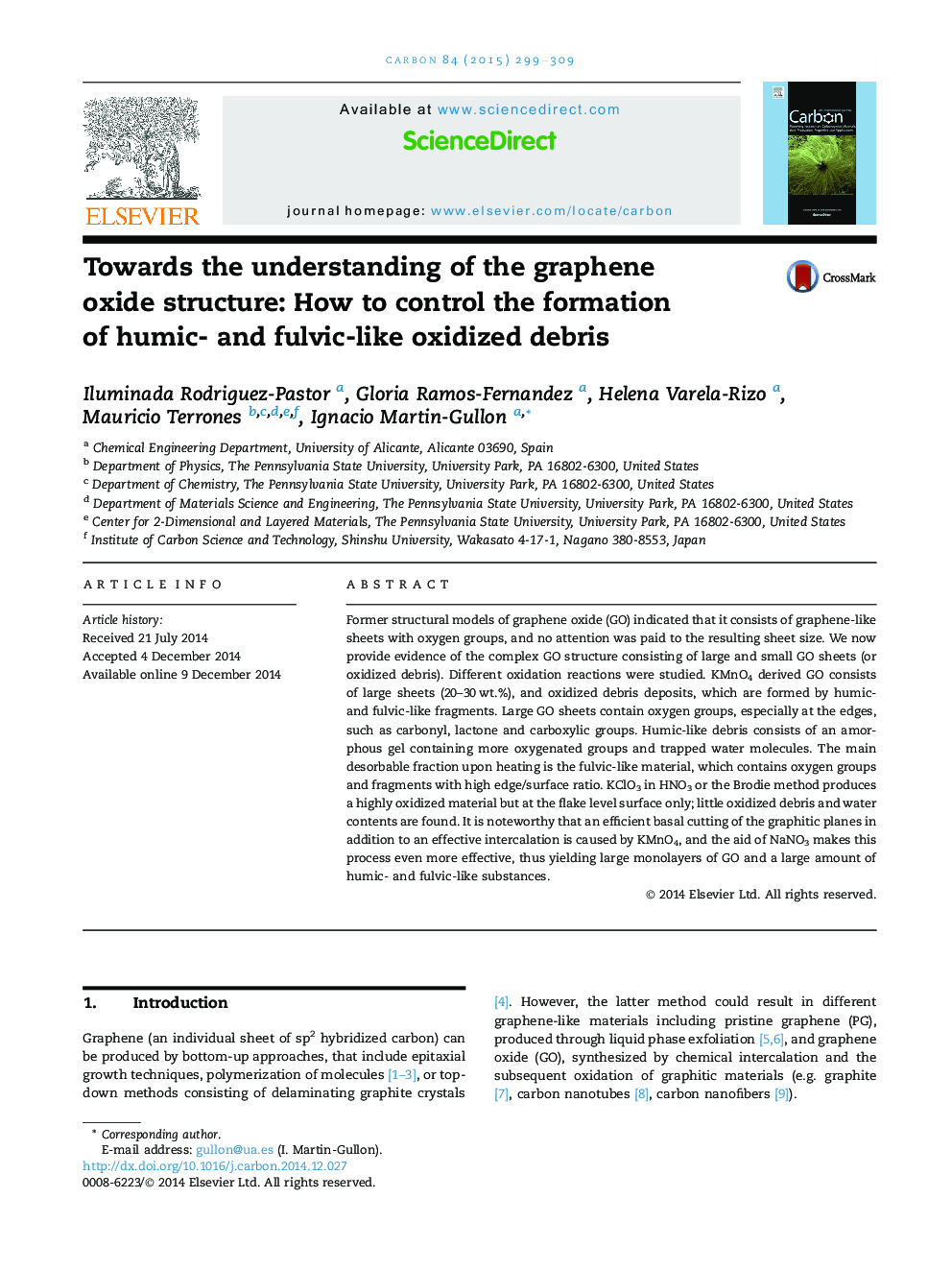| کد مقاله | کد نشریه | سال انتشار | مقاله انگلیسی | نسخه تمام متن |
|---|---|---|---|---|
| 7851948 | 1508863 | 2015 | 11 صفحه PDF | دانلود رایگان |
عنوان انگلیسی مقاله ISI
Towards the understanding of the graphene oxide structure: How to control the formation of humic- and fulvic-like oxidized debris
ترجمه فارسی عنوان
به درک ساختار اکسید گرافین: چگونگی کنترل تشکیل بقایای اکسید شده مانند هومیک و فلوشی
دانلود مقاله + سفارش ترجمه
دانلود مقاله ISI انگلیسی
رایگان برای ایرانیان
موضوعات مرتبط
مهندسی و علوم پایه
مهندسی انرژی
انرژی (عمومی)
چکیده انگلیسی
Former structural models of graphene oxide (GO) indicated that it consists of graphene-like sheets with oxygen groups, and no attention was paid to the resulting sheet size. We now provide evidence of the complex GO structure consisting of large and small GO sheets (or oxidized debris). Different oxidation reactions were studied. KMnO4 derived GO consists of large sheets (20-30Â wt.%), and oxidized debris deposits, which are formed by humic- and fulvic-like fragments. Large GO sheets contain oxygen groups, especially at the edges, such as carbonyl, lactone and carboxylic groups. Humic-like debris consists of an amorphous gel containing more oxygenated groups and trapped water molecules. The main desorbable fraction upon heating is the fulvic-like material, which contains oxygen groups and fragments with high edge/surface ratio. KClO3 in HNO3 or the Brodie method produces a highly oxidized material but at the flake level surface only; little oxidized debris and water contents are found. It is noteworthy that an efficient basal cutting of the graphitic planes in addition to an effective intercalation is caused by KMnO4, and the aid of NaNO3 makes this process even more effective, thus yielding large monolayers of GO and a large amount of humic- and fulvic-like substances.
ناشر
Database: Elsevier - ScienceDirect (ساینس دایرکت)
Journal: Carbon - Volume 84, April 2015, Pages 299-309
Journal: Carbon - Volume 84, April 2015, Pages 299-309
نویسندگان
Iluminada Rodriguez-Pastor, Gloria Ramos-Fernandez, Helena Varela-Rizo, Mauricio Terrones, Ignacio Martin-Gullon,
